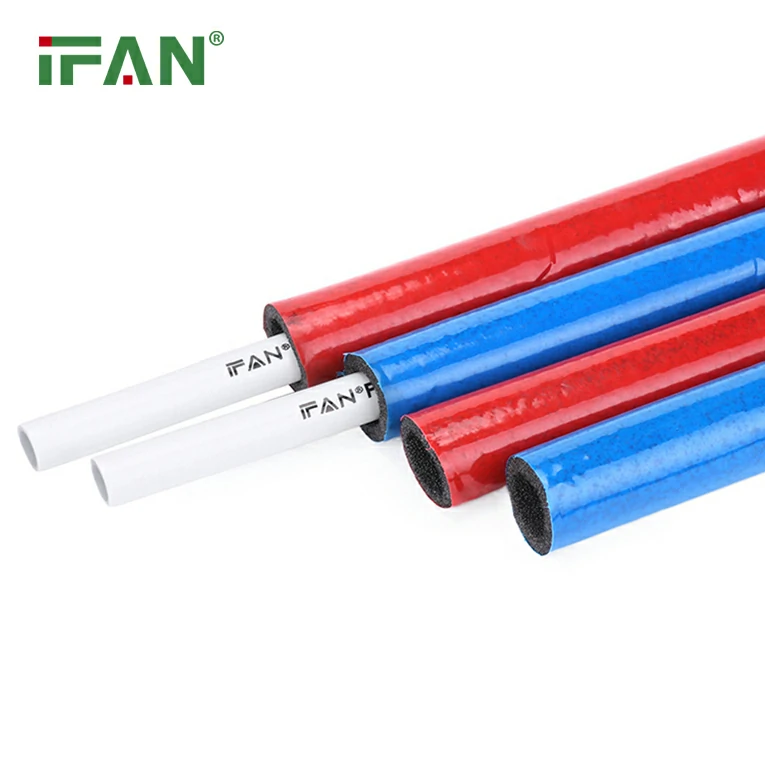In recent years, the construction and plumbing industries have seen a rising demand for more sustainable and environmentally friendly materials. One of the leaders in this innovation is Uponor, a well-known manufacturer of PEX pipes and fittings, who has recently launched the world’s first bio-based PEX pipe. This groundbreaking product not only meets the industry’s high-performance standards but also significantly reduces carbon emissions, marking a pivotal moment in sustainable building practices.

Understanding PEX Pipes
What is PEX?
PEX, or cross-linked polyethylene, is a type of plastic piping that is widely used for plumbing, heating, and cooling systems. Its flexibility, durability, and resistance to scale and chlorine make it an ideal choice for many applications. PEX is also known for its excellent thermal properties, allowing for efficient energy use in heating systems.
The Evolution of PEX
Traditional PEX pipes have been manufactured from petroleum-based resources, contributing to a significant carbon footprint. However, as the world faces climate change and other environmental challenges, the shift towards bio-based materials has become imperative.
The Launch of Bio-Based PEX Pipe
Uponor’s new bio-based PEX pipe is a significant advancement in green technology. This innovative product is made from renewable resources, reducing reliance on fossil fuels. The launch marks a 90% reduction in the carbon footprint compared to conventional petroleum-based PEX pipes.
Key Features of Bio-Based PEX Pipe
1. Sustainability
The most notable feature of Uponor’s bio-based PEX pipe is its sustainability. By using renewable resources, this product contributes positively to the environment. The use of bio-based materials is not just a trend but a necessary shift towards a circular economy.
2. Performance
Despite being made from bio-based materials, the new PEX pipes do not compromise on quality. They maintain the same durability, flexibility, and resistance characteristics that traditional PEX pipes are known for. This means they can withstand extreme temperatures and pressures, ensuring long-lasting performance in various applications.
3. Ease of Installation
Like traditional PEX, the bio-based version is easy to install. Its flexibility allows for quick and efficient installation, which can lead to reduced labor costs and time on the job site.
4. Recyclability
Uponor has designed their bio-based PEX pipe to be recyclable, which further enhances its environmental credentials. At the end of its lifecycle, users can recycle the material, thereby minimizing waste and promoting responsible disposal practices.
Environmental Impact
The impact of Uponor’s bio-based PEX pipe goes beyond mere numbers. By reducing the carbon footprint by 90%, this product plays a substantial role in the fight against climate change.
The construction sector is responsible for a significant portion of global greenhouse gas emissions. Therefore, products that can lead to a reduced environmental impact are essential. By adopting bio-based PEX pipes, builders, contractors, and homeowners can contribute to a more sustainable future.
Market Response
Industry Adoption
Uponor’s innovation has garnered attention from various sectors within the construction and plumbing industries. Early adopters have started integrating bio-based PEX pipes into their projects, benefiting from both sustainability and performance.
Consumer Preferences
As consumers become more environmentally conscious, the demand for sustainable building materials is increasing. The availability of bio-based PEX pipes caters to the growing market of eco-friendly products. This shift not only helps businesses meet regulatory requirements but also aligns them with consumer values.
Future of PEX and Sustainability
The launch of Uponor’s bio-based PEX pipe indicates a broader trend towards sustainability in the construction and plumbing industries. Other manufacturers are likely to follow suit, investing in research and development to create more sustainable products.
Innovation in Materials
As technology evolves, there will be further advancements in materials that reduce environmental impacts. The future of PEX is exciting, with potential innovations that may lead to even lower carbon footprints.
Regulatory Changes
With increasing regulations aimed at reducing carbon emissions, the construction industry will need to adapt. Bio-based materials, such as Uponor’s PEX pipes, are likely to become not just desirable but necessary, as regulations may favor building materials that minimize environmental impact.
Conclusion
Uponor’s launch of the first bio-based PEX pipe is a significant leap towards sustainable construction practices. By reducing the carbon footprint by 90%, this innovative product aligns with the pressing demands of the modern world. As more consumers and companies prioritize sustainability, bio-based PEX pipes represent a future where construction meets ecological responsibility without sacrificing quality or performance.
Incorporating products like this into building practices shows that progress is possible. By choosing bio-based PEX pipes, the industry can collectively work towards a more sustainable future while ensuring that quality and reliability remain at the forefront.
FAQs
1. What is PEX piping?
PEX stands for cross-linked polyethylene, a flexible plastic piping widely used in plumbing and heating systems.
2. How does Uponor’s bio-based PEX pipe reduce carbon footprint?
Uponor’s bio-based PEX pipe is made from renewable resources, leading to a 90% reduction in carbon emissions compared to petroleum-based PEX pipes.
3. Is the bio-based PEX pipe durable?
Yes, the bio-based PEX pipe maintains the same durability and performance characteristics as traditional PEX pipes, making it suitable for various applications.
4. Can bio-based PEX pipes be recycled?
Yes, Uponor’s bio-based PEX pipes are designed to be recyclable, promoting responsible disposal and reducing waste.
5. Why should I choose bio-based PEX pipes for my projects?
Choosing bio-based PEX pipes allows you to contribute to sustainable building practices, reduce environmental impact, and meet consumer demand for eco-friendly products.





